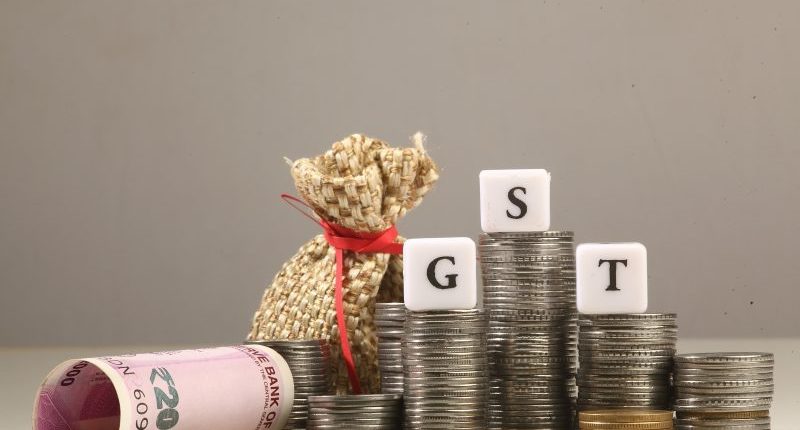The existing GST return scheme consists of taxpayers filing their GSTR-3B returns every month, where they disclose details of their outward supplies, input tax credit claimed and the tax liability for the month. The tax amount is also paid monthly before filing the GSTR-3B return. When it comes to the GSTR-1 return, which is the return for outward supplies made for a tax period, the return is to be furnished monthly except by taxpayers with a turnover up to Rs.1.5 crore, who can opt to furnish this return quarterly.
To ease the compliance burden on small taxpayers, the government had recently introduced a quarterly filing scheme called the Quarterly Return Filing Along With Monthly Payment of Taxes (QRMP) Scheme. Under this scheme, small taxpayers, i.e. taxpayers with an aggregated turnover of up to Rs.5 crore, can file their GSTR-3B returns quarterly beginning from the quarter January-March 2021. Tax payments will still need to be done monthly, with the liability calculated based on the previous month or quarter’s liability as applicable.
Taxpayers opting into this scheme will be given a new facility to furnish their outward supplies in an Invoice Furnishing Facility (IFF) each month between the 1st and 13th day of the succeeding month. This IFF has been introduced to facilitate easy availability of input tax credit (ITC) by those recipients of supplies who have suffered hardships due to quarterly GSTR-1 filers submitting their invoices only at the end of the quarter. Hence, due to the invoices now being entered in the IFF for the first two months of the quarter, the recipient taxpayers can easily avail ITC while setting-off their tax liabilities.
Once a taxpayer has furnished his invoices in the IFF, he need not furnish the same invoices in his GSTR-1 return. However, for the final month of the quarter, he will need to enter his invoices directly in the GSTR-1 return. The invoices entered in the IFF have restricted to a value of Rs.50 lakh per month. The IFF facility available to taxpayers who have opted for the QRMP scheme is optional and not mandatory. The invoice data entered in both the IFF and the GSTR-1 return will be available in the GSTR-2B return of the recipient.
A circular released by the Central Board of Indirect Taxes and Customs (CBIC) states that the annual aggregate turnover of the preceding financial year will be used to determine the eligibility for this scheme. In case a taxpayer’s turnover exceeds Rs.5 crore during any quarter of the current financial year, then that taxpayer will not be eligible for the scheme from the next quarter onwards.
Also Read: GST Officials Unearthed Massive Tax Frauds Amounting to Rs 2,350 Crore
So how can a taxpayer opt into the QRMP scheme? Registered taxpayers whose turnover is up to Rs.5 crore in the preceding financial year will be eligible for a default migration into the scheme, provided their GSTR-3B return for October 2020 had been furnished by 30th November 2020. On the other hand, taxpayers who had not yet filed their GSTR-3B return for October 2020 by 30th November 2020 will not be eligible for a default migration.
The taxpayers ineligible for a default migration need to opt into the QRMP scheme by indicating their preference on the GST portal between the first of the second month of the preceding quarter and until the last day of the first month of the quarter for which such option has been exercised. For example, if a business chooses to file quarterly returns for the quarter of Jan-Mar 2021, it should opt for quarterly filing on the common GST portal between 1st November 2020 and 31st January 2021.
When it comes to default migration, the quarterly filing option will be selected as default for taxpayers with turnover up to Rs. 1.5 crore who have furnished Form GSTR-1 quarterly in the current financial year. The quarterly option will also be selected by default for those taxpayers whose turnover exceeds Rs.1.5 crore and is up to Rs.5 crore in the preceding financial year. In the case of taxpayers with an aggregated turnover of up to Rs.1.5 crore who have furnished Form GSTR-1 monthly in the current financial year, the monthly filing option will be selected as default. Taxpayers can change this default option, if they wish to do so, between 5th December 2020 and 31st January 2021.
Once a registered person has opted for the QRMP scheme, he will need to furnish his return every quarter for all future tax periods, except if his aggregate turnover exceeds Rs.5 crore during a quarter. From the succeeding quarter, he will not be able to file quarterly returns. The taxpayer can also opt for monthly return filing on the GST portal within the time period mentioned above. Taxpayers must note that they will not be eligible to opt for filing quarterly returns if the last return, which was due on the date of exercising such an option has not been filed.
Under the QRMP scheme, the tax liability will still need to be paid monthly. The taxes are to be paid by depositing an amount in the electronic cash ledger that is equivalent to 35% of the tax liability that was paid in the previous quarter, for cases where the GSTR-3B has been furnished quarterly. If GSTR-3B has been furnished monthly, then the total tax liability paid for the last month of the immediately preceding quarter is the amount that needs to be deposited.
This amount needs to be deposited using Form GST PMT-06 by the 25th of the following month, for the first and second months of the quarter. There are certain instances where no amount may be required to be deposited, such as in the first month of the quarter, when the balance in the electronic cash or credit ledger is sufficient for the tax liability of the said month or if the tax liability is nil.
The taxpayer will also not be required to deposit an amount were in the second month of the quarter, when the balance in the electronic cash or credit ledger is sufficient for the cumulative tax liability of the first and second months of the quarter or when the tax liability is nil. No interest will be applicable if the amount is deposited by the 25th of the succeeding months for the first two months of the quarter. If the amount hasn’t been deposited within the due date, then interest will be applicable at the rate in force.
The amount that has been deposited by the taxpayer in the first two months of the quarter shall be used solely to offset the liability in that particular quarter’s GSTR-3B return. If there is any amount left after filing that quarter’s GSTR-3B, the same may either be claimed as a refund or used for any other purpose in the subsequent quarters. A claim of refund in respect of this amount deposited will be allowed only after the GSTR-3B return for the respective quarter has been filed.
The due dates to file GSTR-3B returns under the QRMP scheme will be the 22nd and 24th of the month succeeding the quarter, depending on which state the taxpayer belongs to. For GSTR-1, the due dates will be the 13th of the month succeeding the quarter.
For any clarifications/feedback on the topic, please contact the writer at athena.rebello@cleartax.in

I’m a Chartered Accountant by profession and a writer by passion. ClearTax lets me be both. I love travel, hot tubs, and coffee. I believe that life is short, so I always eat dessert first. Wait.. life is also too short to be reading bios… Go read my articles!





